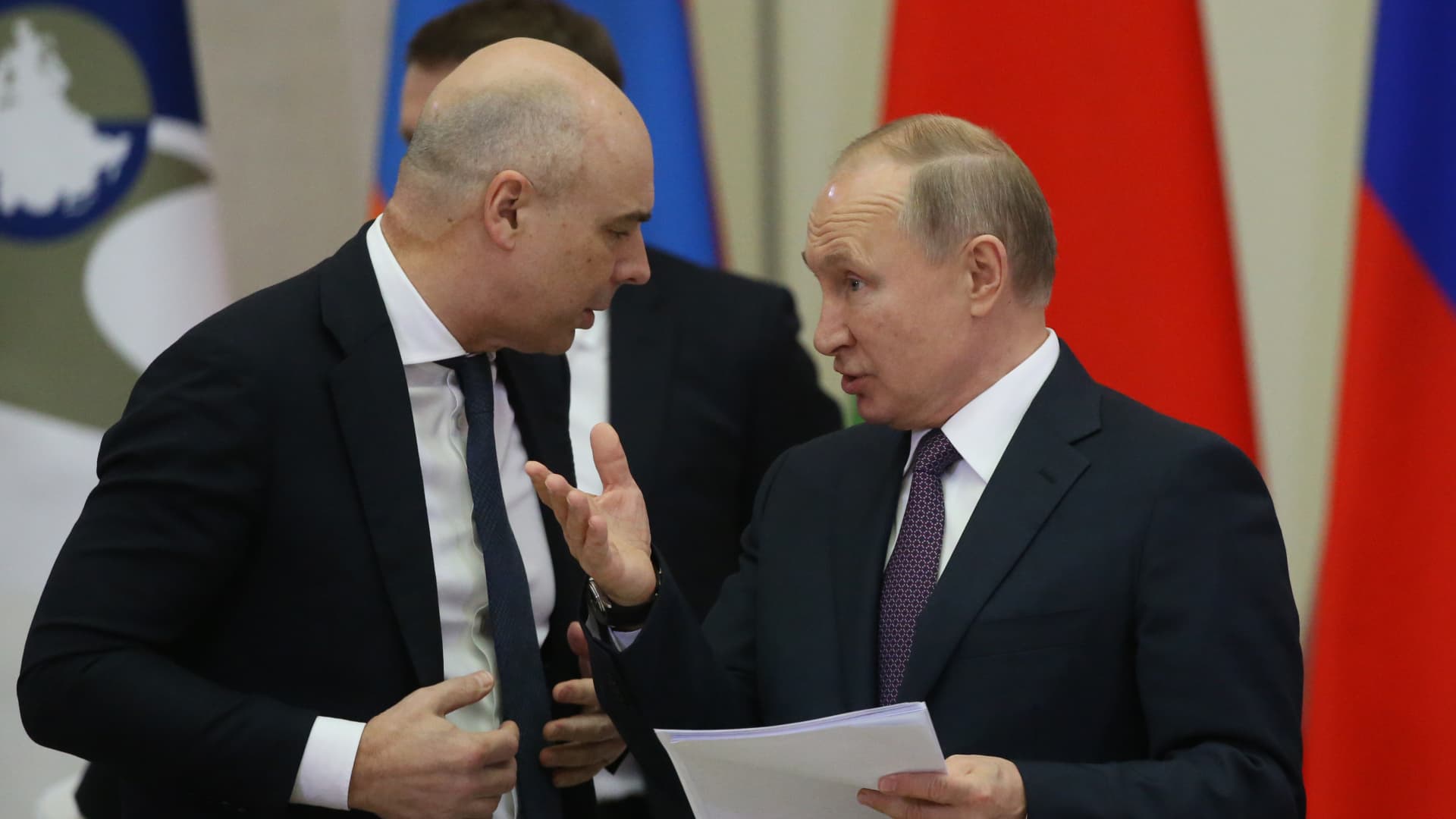Russia could be entering its first major foreign debt default for over a century, after a grace period on two international bond payments lapsed on Sunday night.
Interest payments totaling $100 million were due on May 27 and subject to a grace period which expired on Sunday night. Several media outlets have reported that bondholders have not yet received the payments, after Russia’s attempts to pay in its ruble currency were blocked by international sanctions.
Sweeping sanctions imposed by Western powers in response to Russia’s unprovoked invasion of Ukraine, along with countermeasures from Moscow, have effectively ostracized the country from the global financial system, but so far the Kremlin has managed to find ways to get payments to bondholders on multiple occasions.
Attempts to circumvent sanctions took a further blow in late May, however, when the U.S. Treasury Department allowed a key exemption to expire. The waiver had previously allowed Russia’s central bank to process payments to bondholders in dollars through U.S. and international banks, on a case-by-case basis.
Russian Finance Minister Anton Siluanov suggested earlier this month that Russia may have found another means of payment. Moscow wired the $100 million in rubles to its domestic settlement house, but the two bonds in question are not subject to a ruble clause that would allow payment in the domestic currency to be converted overseas.
Reuters reported early on Monday, citing two sources, that some Taiwanese holders of Russian eurobonds have not received the interest payments due on May 27, indicating that Russia may be entering its first foreign debt default since 1918, despite having ample cash and willingness to pay.
Siluanov reportedly told Russian state-owned news agency RIA Novosti that the blockage of payments does not constitute a genuine default, which usually come as the result of unwillingness or inability to pay, and called the situation a “farce.”
A further $2 billion in payments is due before the end of the year, though some of the bonds issued after 2014 are permitted to be paid in rubles or other alternative currencies, according to the contracts.
Although the signals are that payments have indeed been held up by international sanctions, it may take some time to confirm the default.
Decades of default?
Timothy Ash, senior emerging market sovereign strategist at Bluebay Asset Management, said while the default might not have much immediate market impact, Russian sovereign longer maturity eurobonds that were trading at 130 cents before the invasion have already crashed to between 20 and 30 cents, and are now trading at default levels.
“Indeed, Russia likely already defaulted on some ruble denominated instruments owed to foreigners in the weeks just after the invasion, albeit having pulled their ratings, the ratings agencies were not able to call this a default,” Ash said in a note Monday.
“But this default is important as it will impact on Russia’s ratings, market access and financing costs for years to come. And important herein, given the U.S. Treasury forced Russia into default, Russia will only be able to come out of default when the U.S. Treasury gives bond holders the green light to negotiate terms with Russia’s foreign creditors.”
Ash suggested this process could take years or decades, even in the event of a cease-fire that falls short of a full peace agreement, meaning Russia’s access to foreign financing will remain limited and it will face higher borrowing costs for a long time to come.
He argued that Russia’s alternative sources of foreign financing beyond the West, such as Chinese banks, would also be reluctant to look beyond the default headlines.
“If they are prepared to run the secondary sanctions risks — which so far they have not — and still lend to Russia, they will add a huge risk premium to lending rates for the prospect of somehow being dragged into future debt restructuring talks,” Ash said.
“It just makes lending to Russia that much more difficult, so people will avoid it. And that means lower investment, lower growth, lower living standards, capital and human flight (brain drain), and a vicious circle of decline for the Russian economy.”
Russia has thus far managed to implement successful capital controls that have supported the ruble currency, and continued to bring in substantial revenues from energy exports as a result of soaring oil and gas prices.
However, Ash suggested that the carbon transition and accelerated Western diversification away from Russian energy and commodities means that this “golden goose is cooked two to three years down the line.”
“So on a two to three years outlook Russia faces a collapse in export receipts, with almost no access to international financing because of sanctions and default,” he said.
“Meanwhile, with much of Putin’s military having been destroyed in Ukraine, he will struggle to finance military rebuild which he will be desperate to achieve given his desire to retain some kind of parity with NATO.”
The resulting diversion of resources away from consumption and into military investment, Ash argued, could lead to an outlook of “decay and decline” for Putin’s Russia.
